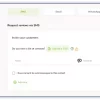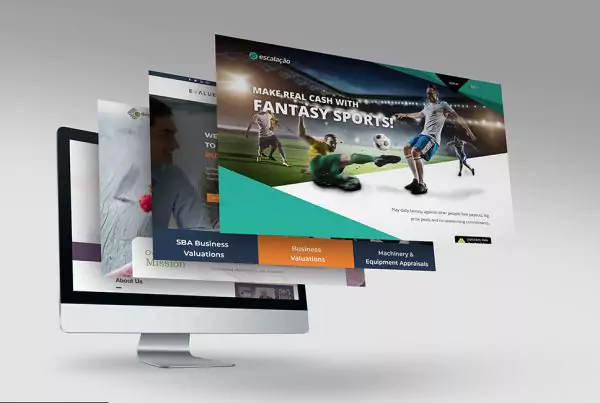TL;DR
Looking good isn’t enough—successful digital products must be usable, intuitive, and built around real user needs. User-Centric Design (UCD) goes beyond visual appeal to create experiences that drive customer satisfaction, loyalty, and business growth. By engaging users early, testing often, and focusing on usability, businesses can boost conversions, reduce support costs, and gain a competitive edge.
Table of Content
1. Introduction: Why Design Needs More Than Looks
2. What Is User-Centric Design (UCD)?
3. Key Principles of User-Centric Design
4. The Problem with Prioritizing Aesthetics Over Functionality
5. Why UCD Is Good for Business
6. Measuring Success in User-Centric Design
7. How to Implement UCD in Your Business
8. Conclusion: Designing for People, Not Just Pixels
Introduction
In today’s digital world, having a website or app that looks good isn’t enough. While eye-catching designs can grab attention, the key to success lies in how well a product serves its users. This approach is called User-Centric Design (UCD), focusing on making products easy, helpful, and enjoyable to use rather than just visually appealing.
Think about visiting a beautifully designed website but struggling to find what you need. Did you stay or leave frustrated? Research shows 88% of online shoppers won’t return to a site after a bad experience. Design must not only look good but also be practical and user-friendly.
This article explains why businesses should focus on users to increase sales, build customer loyalty, and achieve long-term success.
What Is User-Centric Design?
User-Centric Design (UCD) is an approach where products—whether websites, apps, or physical items—are created around the needs of the people who use them. Rather than focusing on flashy visuals, UCD starts by understanding user goals, challenges, and behaviors.
The goal of UCD is to create designs that are easy to use, accessible to all, and genuinely beneficial. It relies on real user research instead of assumptions about what people might want. Businesses gather insights by interviewing users, observing their behavior, and analyzing their actions.
UCD follows a continuous cycle:
- Understand – Study user needs and problems.
- Design – Create solutions based on insights.
- Prototype – Build a basic version to test ideas.
- Test – Allow real users to interact with the prototype.
- Improve – Make changes based on feedback and repeat the cycle.
This process ensures that products evolve based on actual user experiences rather than assumptions.
Key Principles of User-Centric Design
To create user-friendly products, businesses should follow these principles:
- Engage Users Early & Often: Collect user feedback from the start and throughout development.
- Understand User Needs Deeply: Create profiles (“personas”) and journey maps to represent user behaviors and goals.
- Design, Test, Improve: Continuously refine designs through testing and user feedback.
- Check for Usability: Conduct real-world tests to identify difficulties.
- Focus on the Whole Experience: Ensure smooth interactions across all touchpoints—websites, apps, customer service, and more.
By following these principles, businesses create solutions that serve their audience, leading to greater satisfaction and long-term success.
The Problem with Prioritizing Looks Over Function
While a visually appealing design is important, focusing too much on appearance at the expense of usability can lead to frustration.
- Good Design Attracts: Encourages users to explore a website or app.
- Looks Alone Can Frustrate: A stylish design that is confusing or hard to use can drive people away.
- Ignoring User Needs Can Harm Business: A product that doesn’t solve user problems won’t keep them engaged.
- Trendy Designs Age Fast: A design based on current trends may soon feel outdated and require frequent updates.
If users struggle to navigate a site or complete simple tasks, they will likely leave and find something easier. Even the most beautiful design won’t succeed if it’s frustrating or impractical.
Why User-Centric Design Helps Businesses
Implementing a UCD approach benefits not only users but also businesses:
- Higher Sales: Well-designed, user-friendly websites make it easier for customers to complete purchases, increasing conversions.
- Greater Customer Loyalty: Satisfied users are more likely to return, spend more time on a site, and recommend it to others.
- Lower Costs: Early testing with users helps fix problems before they become expensive to correct.
- Reduced Support Requests: Simple, intuitive designs lead to fewer customer issues, saving time and money.
- Competitive Advantage: Companies that prioritize usability stand out in crowded markets.
When businesses align their design approach with user needs, they create products that people want to use, leading to greater engagement and long-term success.
Measuring Success in User-Centric Design
How can businesses ensure their UCD strategy is working? Key metrics include:
- Task Completion Rate: The percentage of users who successfully achieve key actions (like purchasing or signing up).
- Time to Complete Tasks: The average time users take to complete important tasks. Shorter times often indicate better usability.
- Error Rate: The number of mistakes users make while using the product. Fewer errors signal a simpler design.
- User Satisfaction Scores: Surveys (such as the System Usability Scale) measure how comfortable and satisfied users feel.
- Conversion Rate: The percentage of visitors who complete desired actions, such as purchases or sign-ups.
Tracking these metrics provides valuable insights into how well the design serves users and where improvements are needed.
How to Implement User-Centric Design in Your Business
Successfully adopting UCD requires making it a core part of your company’s daily operations. Here’s how:
- Prioritize User Research: Regularly gather feedback through surveys, interviews, and analytics.
- Make Usability a Key Requirement: Treat ease of use as essential as visuals or features.
- Prototype and Test Frequently: Build simple versions early and test them often with real users.
- Encourage Team Collaboration: Designers, developers, and marketers should work together with a shared focus on user needs.
- Commit to Continuous Improvement: Keep refining the product based on user feedback and performance data.
To gain company-wide support for UCD, show how it improves business outcomes—such as boosting engagement, reducing customer complaints, or increasing conversions. Highlight success stories or test projects to prove its effectiveness.
Conclusion
Design for Users, Not Just Aesthetics
A beautiful design may attract users initially, but true success comes from creating intuitive, valuable, and seamless experiences. Businesses that prioritize User-Centric Design build products that solve real problems, increase customer satisfaction, and drive growth.
By shifting the focus from aesthetics to usability, companies create solutions that not only look good but also work effortlessly for users. This strategy isn’t just a trend—it’s a fundamental approach for sustainable success in the digital age.









